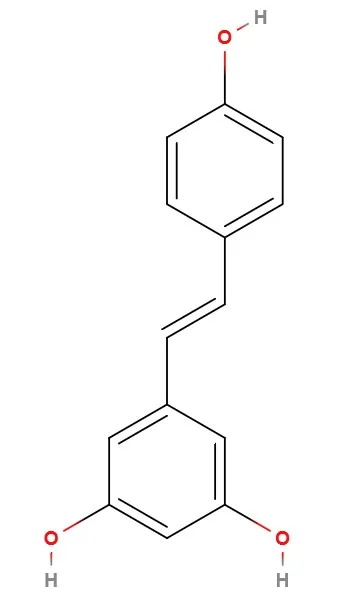Pterostilbene and resveratrol are two naturally occurring polyphenols that possess powerful antioxidant properties, making them attractive to those looking to improve their health and strengthen their immune system. While there are many similarities between these molecules, there are also several key differences that can make one more beneficial than the other. In this article, we will compare the molecular structure and benefits of both pterostilbene and resveratrol to help you decide which one is right for you.
Chemical Structure:
Both pterostilbene and resveratrol are derivatives of stilbene, which is a naturally occurring organic compound. Resveratrol contains two phenol rings that are linked by a double bond, while pterostilbene contains an additional methoxy group (-OCH3) on one of the phenol rings. (Figure 1)


The presence of the methoxy group in pterostilbene increases its lipophilicity and makes it more stable in the body. This structural difference is thought to play a significant role in the differences in the bioavailability and absorption of the two compounds.
Bioavailability and Absorption:
Bioavailability refers to the amount of a substance that is absorbed by the body and becomes available for use. The bioavailability of pterostilbene and resveratrol is influenced by several factors, including their chemical structure, solubility, and metabolism.
Resveratrol has been shown to have low bioavailability due to its poor solubility in water and low stability in the body. In contrast, pterostilbene has higher bioavailability due to its increased lipophilicity and improved stability in the body. Studies have shown that pterostilbene has a longer half-life than resveratrol, indicating that it stays in the body longer and is more effectively absorbed.
However, the bioavailability of pterostilbene and resveratrol can be enhanced by formulating them as nanoparticles or in combination with other compounds that improve their solubility and stability. In addition, the absorption of both compounds can be affected by the presence of other nutrients in the diet, such as fats, which can increase their absorption by the body.
The benefits of taking either molecule are numerous. Both polyphenols have been shown to have anti-inflammatory and antioxidative effects, helping to reduce oxidative stress and improve overall health. While both molecules can exert beneficial effects on the body, research suggests that pterostilbene may be superior in many regards. For instance, pterostilbene has more potent anti-inflammatory properties than resveratrol and can help protect against neurodegenerative diseases such as Alzheimer’s and Parkinson’s Disease due to its ability to cross the blood-brain barrier more efficiently than its counterpart. Additionally, studies have shown that pterostilbene is better able to decrease LDL cholesterol levels and improve glucose metabolism when compared with resveratrol.
Conclusion:
In conclusion, pterostilbene and resveratrol are two polyphenolic compounds that share a similar chemical structure but differ in the presence of a methoxy group in pterostilbene. This structural difference contributes to the differences in the bioavailability and absorption of the two compounds. While resveratrol has been shown to have low bioavailability, pterostilbene has higher bioavailability due to its increased lipophilicity and improved stability in the body. However, the bioavailability of both compounds can be enhanced by formulating them as nanoparticles or in combination with other compounds that improve their solubility and stability.
Shop Pterostilbene Supplements

